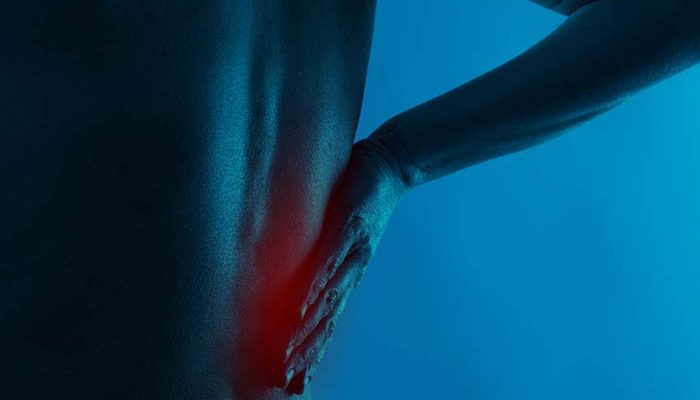One of the most common causes of back pain is known as degenerative disc disease. The very name of this condition causes a lot of confusion, as it is actually not a “disease” at all but a natural, age-related spine condition that is due to everyday wear-and-tear on spinal discs. Further, the word “degenerative” can also be misleading, as a person hearing this term may understand that symptoms will worsen with age. While it is true that the disc will continue to degenerate as a part of the aging process, it is important to understand that this does not necessarily mean that symptoms will worsen.
Let’s Talk Symptoms
Those who suffer with degenerative disc disease generally live with a light level of persistent pain, which is also known as chronic pain, but also occasionally suffer from severe pain flare-ups. Symptoms experienced may include numbness, weakness, and radicular pain, which refers to shooting pains felt in the arms and legs. Disc degeneration in the neck and lower back is generally the most painful. Due to everyday movements and stress, these two areas of the spine are also the most susceptible to disc degeneration. The process of degeneration is generally gradual and can lead to spinal instability, muscle tension, and nerve pain. Other symptoms that may be experienced as a result of disc degeneration include increased pain when twisting, bending, or lifting something heavy, a feeling that you don’t have freedom of movement due to your back feeling “locked” in place, muscle spasms, muscle tensions, increased pain while sitting or standing for extended hours of time, and reduced pain when changing positions frequently, reclining, or strategically using pillows to reduce neck or back pain.
Does Everyone Get It?
Since disc degeneration is a natural part of aging, everyone will certainly exhibit some changes in their spinal discs. However, the good news is that not everyone will experience symptoms related to the natural disc degeneration process. Therefore, what separates someone with naturally aging discs from someone who is diagnosed with degenerative disc disease are the symptoms experienced. It is also noteworthy to mention that the severity of symptoms vary greatly from one person to another, ranging from minor irritation to completely disabling pain, which fortunately is quite rare. However, the level of pain does not always form a direct correlation with the level of damage occurring in the spine. Discs showing severe degeneration may produce little to no pain, while spinal discs with minimal degeneration may cause severe pain.
Early Detection Is Key
If you begin having symptoms associated with degenerative disc disease, it is important to get evaluated by a Stridewell Spine Specialist. If symptoms are left untreated, degenerative disc disease can lead to or speed up numerous spine conditions, including but not limited to osteoarthritis of the spine, scoliosis, degenerative spondylolisthesis, and spinal stenosis.
Treatment Options
While Stridewell Spine Specialists can make referrals to local practices offering very innovative and effective minimally invasive surgery options for those suffering with degenerative disc disease, surgery is generally only recommended after more conservative treatment options have not produced favorable outcomes. Such conservative treatment options that may be recommended prior to surgery include, but are certainly not limited to, heat therapy, cold therapy, lifestyle modifications, physical therapy, anti-inflammatory pain medications, chiropractic therapy, and epidural steroid injections.
“If you are experiencing any type of spine-related pain, it is prudent to come in to the Stridewell Same-Day Spine Clinic for an evaluation, diagnosis, and treatment plan. Regardless of your condition, early detection generally produces the very best outcomes and may prevent further complications from occurring” Stridewell Tips
read article


